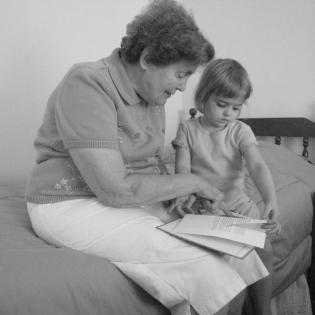Sharing and Caring Across Generations
What can we learn from diverse people today and in history about private action for the common good?
Photo Credit: Grandma reading to Anika #1 by Ratha Grimes is licensed under CC by 2.0
In this lesson, the children listen to stories told by seniors in their community and develop a relationship of sharing time and talent. This set of lessons focus on memories, especially memories related to generosity.
In this lesson, a picture books raises awareness of the importance of memories to the people of all ages that make up a community. The children learn the definition of philanthropy and identify an act of philanthropy in the literature book Wilfrid Gordon McDonald Partridge.
The children tell stories about their family memories and the special “memory items” brought from home. (See Lesson One: Traveling Back in Time.) They meet their senior friend in person or through writing and share and compare memories.
Through storytelling, children recognize that their actions and behaviors have an impact and become memories for future generations.
Through multiple visits to a retirement home, letter writing, or by inviting seniors to an event, children learn effective communication, sensitivity to people of different generations, and shared experiences while learning about the common good and stewardship.
